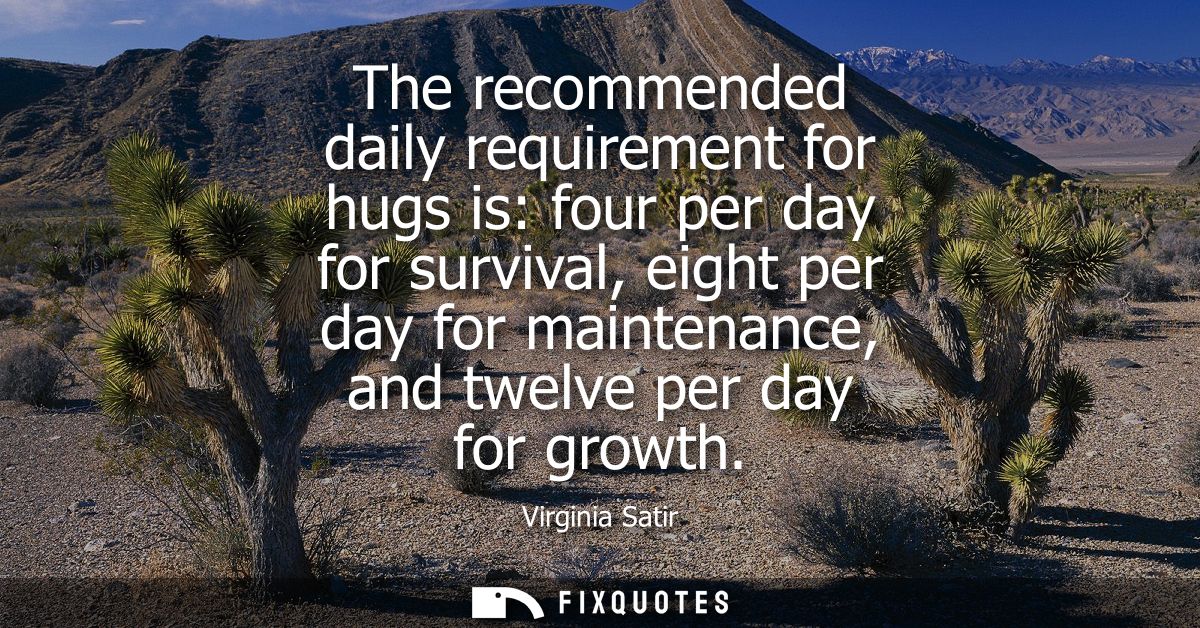"The recommended daily requirement for hugs is: four per day for survival, eight per day for maintenance, and twelve per day for growth"
About this Quote
Virginia Satir’s statement about hugs highlights the vital importance of human connection and physical affection in daily life. The specific numbers, four hugs for survival, eight for maintenance, and twelve for growth, are less about a scientific formula and more about illustrating the essential role of nurturing touch in emotional health and personal development. By linking differing amounts of hugs to “survival,” “maintenance,” and “growth,” Satir suggests that affectionate touch is as necessary for psychological well-being as food is for physical health.
The idea that four hugs are necessary for “survival” posits that a minimum level of affection is fundamental to coping with life’s stresses and retaining emotional stability. Without it, loneliness, anxiety, or even depression may take hold. Moving to eight hugs for “maintenance” implies that ongoing, regular expressions of love and care are needed to keep us emotionally balanced and prevent us from merely enduring life. Twelve hugs for “growth” points to the notion that frequent, heartfelt connectedness with others helps us flourish, fueling self-esteem, resilience, and our ability to empathize and connect deeply with the world.
Satir’s categorization reflects her background in family therapy, emphasizing the nourishment that comes from safe, loving, non-sexual touch. Hugs communicate acceptance, solidarity, and love without words, bridging gaps that language sometimes can’t fill. They can lower stress levels, reduce feelings of isolation, and foster trust.
While the numbers might be symbolic, the deeper message is clear: physical affection shouldn’t be undervalued or regarded as a luxury. Regular connection, whether through hugs or other gestures, sustains us emotionally, not only helping us to survive but also allowing us to thrive and grow. Satir encourages a greater awareness of the human need for closeness, inviting us to embrace one another as a daily practice of care and nourishment.
More details
About the Author

